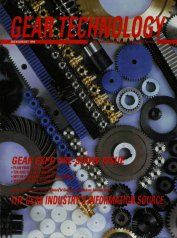Gear Expo 99, AGMA's biennial showcase for the gear industry, has left the Rust Belt this year and landed in Music City U.S.A., Nashville, Tennessee. The event, with exhibitors from around the globe showing off the latest in gear manufacturing as well as metal working processes, will be held at the Nashville Convention Center, October 24-27, 1999. According to Kurt Medert, AGMA vice president and Gear Expo show manager, "In choosing Nashville, AGMA;s Trade Show Advisory Council found a city that is an excellent trade show site. It has the right mix of convention center, nearby hotels, and a clean downtown area with entertainment readily available for the exhibitors and visitors alike. Nashville is in the heart of southern industry, which we see as a focus of growth for the gear industry and its customers."
